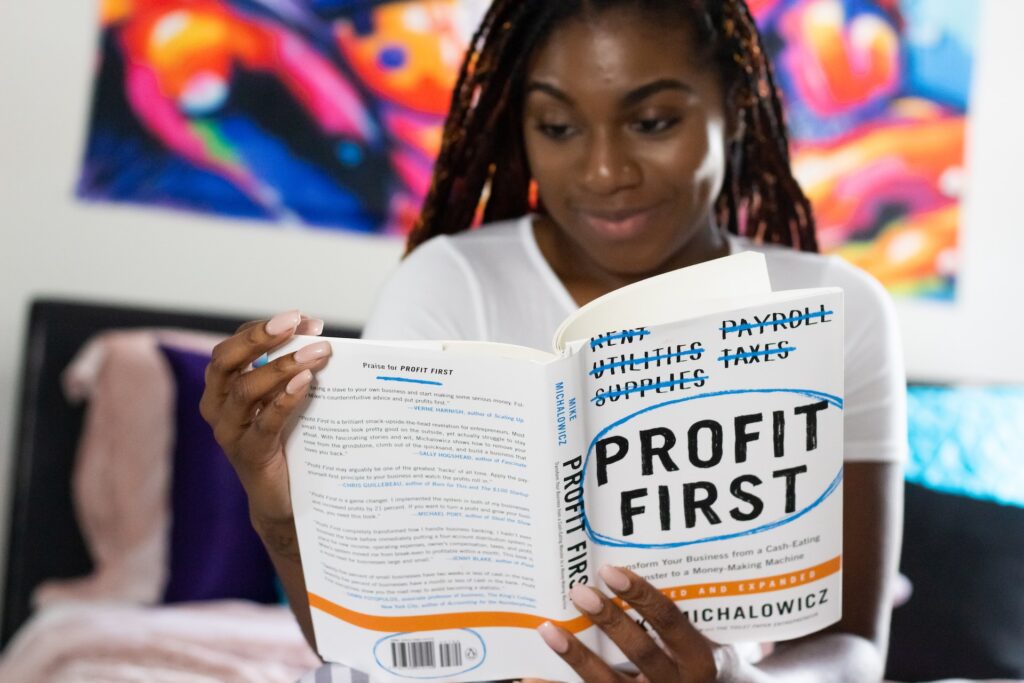With college comes great responsibility. Yup, that includes money matters. For most college students, you’ll become more and more responsible for handling your money. That means figuring out how to get the money you need, where to get it from, and how to make it last. This is where financial literacy comes in. Financial literacy refers to the understanding of a few key financial skills such as budgeting, borrowing, investing, and personal financial management and it’s important for high school and college students alike.
Funding your college education is expensive. Don’t make it even more expensive by being irresponsible with money. Investing some time in attaining financial literacy will help you make the most of available funds. It may also help reduce some of the costs associated with college.
These are some of the most important financial literacy lessons for college students.
7 Lessons in Financial Literacy for College Students
1. Understand The Types Of Financing Available
You know you can take student loans to fund your college education. But did you know that there are several other types of financial aid available for the purpose? In fact, student loans should be your last resort as they are the most expensive type of financial aid for college.
If you need money for college, start by researching scholarships. Scholarships are the best resource for free money that you don’t have to return. You will have to put in the time to look for and apply to scholarships you qualify for. But the time and effort you put in are well worth it when you consider that the money is yours to keep. Moreover, there’s no limit to the number of scholarships you can apply for or the total reward money you can win. You could cover a substantial portion of your college tuition with free scholarship money.
The second-most important thing to do is to file the FAFSA (Free Application for Federal Student Aid). This is a federal government initiative. Submitting the FAFSA qualifies you for different types of federal student aid including grants, student loans, and institutional aid.
Grants are a type of free federal financial aid that is awarded based on financial need. You will need to submit documentation demonstrating financial need to qualify for grants.
Federal student loans refer to money that you borrow from the federal government and have to repay with interest after you graduate. These loans typically have low interest rates and come with several borrower protections. You have to file the FAFSA to qualify for these low-cost federal student loans.
Private student loans refer to the money that you borrow from private institutions such as banks and credit unions. These should be your last resort as they have higher interest rates and no buyer protections.
Understanding the types of financial aid available is important so you can prioritize where and how to obtain the money you need.
2. Understand How Student Loan Debt Works
Getting student loans is relatively easy. You qualify for many types of student loans just by showing your college enrollment status. There’s no need to put down any collateral. This can make it easy – and tempting – to borrow more than you need ‘just in case’. This can be a big mistake.
Any money you borrow has to be returned with interest. You may not need to return the money while you’re in college but the interest keeps accruing during that time. After you graduate, the accrued interest is added on to your total bill. Additionally, interest keeps accruing on the outstanding amount until the debt is completely paid off. Depending on how much you’ve borrowed, the total accrued interest could add a few thousand dollars to your total amount.
Remember, you will end up paying back much more than what you initially borrowed. Borrowing only what you need and no more can help limit the amount of interest that accrues and lower the cost of college. Even a marginal reduction can make a difference.
3. Create A Budget
Most college students are cash-strapped and have to get by on a tight budget. The big mistake most students make is splurging on impulse purchases, dining out, concerts, and other unnecessary luxuries. Very often, at the end of the month, they run out of money to pay their rent, utility bills or basic groceries.
The most effective way to stretch your limited funds over the full month is by creating a budget. Start by entering all the essential expenses for the month. Once that is taken care of, you’ll know how much money you have remaining that can be used for other purposes.
The key rule should always be to pay off your essential expenses first so you’re not thrown out from your rental or your utilities are not disconnected.
4. Open A Savings Account
So, you’ve made your budget and figured out you do have some spare cash to spend on whatever you want. That’s great news! The next thing is to decide what to do what that money. Sure, you can spend it on pizzas, takeaways, or the latest video game. On the other hand, you could consider it putting it into a savings account.
A savings account is an account you open in a bank. You keep depositing any spare cash you have into the account. The account acts as a ‘piggy bank’ that does more than just hold the money for you. You also earn interest on the total balance in the account. The interest isn’t much but it does help your money grow while also helping you build a habit of saving.
Another benefit of a savings account is that it also acts as an emergency fund. If you do need money in an emergency, you can withdraw up to the balance in your account. When the emergency has passed, you can start building your savings account again. This is far better than taking an expensive loan to cover an emergency.
5. Understand Credit Scores & Why They Are Important
Now’s a good time to start understanding what a credit score is and how it can impact you in the immediate future and later too. A good credit score can help you get a credit card, mortgage, personal loan, and vehicle loan more easily. With a good score, you’ll qualify for lower interest rates too. Many prospective employers and landlords will also check your credit score before hiring you or renting out to you.
6. Learn How To Build A Strong Credit Score
You cannot build a credit score overnight. It takes months and years of consistency and good financial habits to build a strong credit score. There’s no better time to start than now. The earlier you get started, the more time you’ll have to build your score.
Making all credit card and loan payments on time is a good way to start. Every payment made on time and in full will add a few points to your score. On the other hand, every late payment can deduct points from your total score. If you have trouble keeping track of due dates and payment amounts, enroll in autopay. This automatically transfers the amount due from your account to the creditor on the date you set. This way your payments always go out on time, benefiting you and your credit score.
Understand the other factors that go into calculating your credit score so you can determine what you should and shouldn’t do to boost your score.
7. Know How To Obtain And Read Your Credit Report
You’re entitled to a free credit report once a year. You can obtain a free copy of your credit report at AnnualCreditReport.com. Request a free copy and go through the report and look for any inaccuracies. If you do find an incorrect entry that’s damaging your score, you can file a dispute with the bureau asking them to correct the mistake and recalculate your score.
It’s a good idea to establish the habit of checking your credit report at least once a year. Mistakes do happen but you shouldn’t have to pay for them if they aren’t your fault. Going through your credit report regularly won’t take a lot of time but it will ensure that your credit score is not unnecessarily damaged for no fault of yours.






